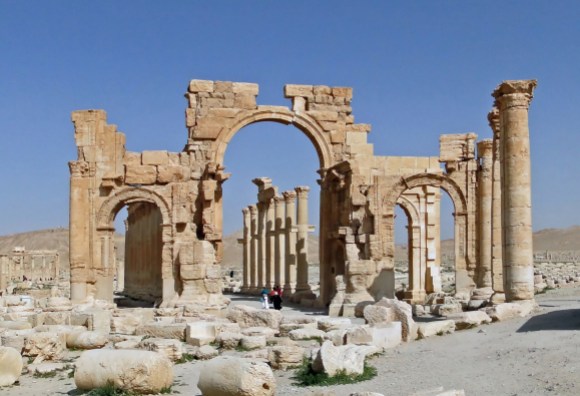
Photo by Bernard Gagnon, freely licensed under CC BY-SA 3.0.
Lars Amréus, the Director-General of the National Heritage Board of Sweden argued in 2013 that “the greatest threat towards cultural heritage is a lack of knowledge and disinterest. … The best way to protect [it] is knowledge and information that is easy to find and free.”
The idea of using information to prevent destruction of cultural heritage is shared, and have guided the work done, by the Wikimedia movement for a long time. In keeping with this, Wikimedia Sverige (Sweden) has designed a new project with a generous grant of US$300,000 from the Culture Foundation of the Swedish Postcode Lottery that will run from January 2016 to the end of June 2017.
Our partners include world-class organizations: we are working closely with UNESCO to identify what data to include, contact organizations about their material, and other similar questions. Our point of contact is John Cummings, who is a Wikipedian in Residence at UNESCO’s headquarters in Paris. Cultural Heritage without Borders wil play a similar role, and we will utilize their network in a number of countries to obtain data, images, and other types of media. We are also working with Wikimedia Italia to upload a large amount of images from Italian archaeologists in Palmyra.
As part of the project, we will:
- Work with the Wikidata community to include the information around immovable heritage in more than 50 countries that has been gathered in the unique Wiki Loves Monuments’ database on Wikidata. This is official data about the immovable cultural heritage, such as monuments and archeological sites. Reusing the information thus becomes easier than ever. Furthermore we will work on a solution that automatically updates the information on Wikidata when the official data is updated. This work will help to give anyone interested up-to-date and relevant data about the cultural heritage in the world, and compare and share it.
- Contact authorities from around 10 countries where the cultural heritage is at risk. The goal is to convince them to open up and share their official data about their immovable cultural heritage. The aim is that they will use a CC0 (public domain) license, which would allow it to be included on Wikidata. This work will be done in close cooperation with UNESCO and Cultural Heritage without Borders, which will help us reach decision-makers and convince them to release the data. These discussions will hopefully initiate a broader discussion on open data in the different countries, and around the need to communicate about the cultural heritage.
- A series of collaborations with GLAM institutions that will lead to mass uploads of at least 100,000 media files depicting the cultural heritage in different countries. The media files could then be connected to the information on Wikidata and included in the articles on Wikipedia, and we are planning to organize events to engage the volunteer community and find good ways to do this. We are hoping to reach at least 10 million views of the material on Wikimedia services in 2016. Then 50 million impressions/year.
- Events will be organized on open data and its re-use as well as to inform what the project is all about and how interested parties can contribute. We will be seen and heard in important conferences worldwide and hopefully give the Wikimedia movement a voice where we, for different reasons, haven’t had one before.
- A photo exhibition will be organized in at least three countries together with Wikimedia Italia. The exhibition will include footage from Palmyra taken by a group of Italian archaeologists. This is material that hasn’t previously been shown to the public.
We are standing on the shoulders of giants and are building on the great work that has been done previously around collaboration with the GLAM sector (Galleries, Libraries, Archives and Museums), with the data gathering for Wiki Loves Monuments (which over the years became the world’s largest photo competition) and the creation of a huge amount of Wikipedia articles about the world’s cultural heritage.
Please join us in this effort.
John Andersson, Project Manager for Connected Open Heritage
Wikimedia Sverige
The views expressed are not necessarily those of the Wikimedia Foundation or Wikipedia; responses and critical commentary are invited in the comments section below.

Can you help us translate this article?
In order for this article to reach as many people as possible we would like your help. Can you translate this article to get the message out?
Start translation